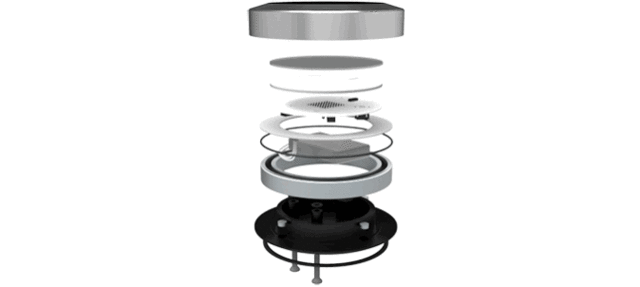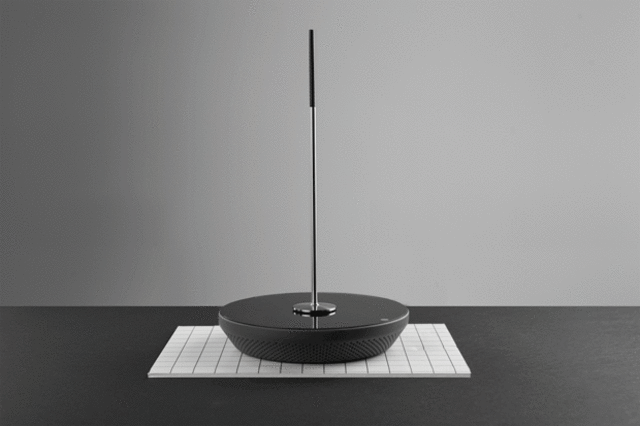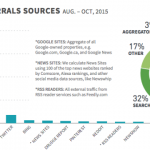How Kickstarter Is Priming Itself for achievement In Germany, Its greatest world expansion yet
sure, it made tweaks to its lingual and monetary underpinnings. but greater than that, it went out and found killer crowdfunding campaigns.
may just 12, 2015
beginning today, individuals in Germany can crowdfund their brilliant concepts the usage of Kickstarter. If it comes as a shock that they have not been ready to do so for a very long time, that is understandable.
Germany, after all, is the fourth biggest economic system on the earth. It has the most important population within the European Union. it is famed for the standard of its engineering and the caliber of its technical universities—precious belongings when it comes to growing the sort of devices that rank among the many best possible-profile Kickstarter campaigns. mainly, for those who had been to design a country from scratch to be a wonderful venue for crowdfunding, it might have a few of the traits of the German market.
entering Germany at its own percent is entirely consistent with Kickstarter’s method of doing things, which tends to be measured and considerate. In its six years of existence, the company has only rolled out in 10 international locations. Germany is number eleven; France, which goes live to tell the tale may just 27, will make it a dozen. That stands in sharp distinction to its fairly older archrival Indiegogo, which counts “global” as one among its defining characteristics and has hosted campaigns for creators in 224 international locations. (Indiegogo launched its personal main German push in 2012, with a contest for startups that offered matching funds from Google.)
Launching Kickstarter in a brand new country is not just a topic of flipping a switch and waiting for the cool projects to flood in. With its German debut, Kickstarter is on hand in a language rather then English for the first time—an improve that required big tweaks to the platform. it is going to also alter itself to local e-commerce habits by means of allowing Germans pledging €250 or less to pay with an immediate debit from a bank account slightly than a bank card.
however for Kickstarter, girding itself to enter Germany was once best partly about technical and monetary issues. simply as necessary, the corporate wished to debut with a important mass of exceptional projects—ideas with a high probability of taking pictures the imagination of the neighborhood, spearheaded by means of individuals who may ship on their guarantees.
“there isn’t any better idea for possible creators than seeing anyone putting collectively an attractive marketing campaign for a super venture,” explains Nick Yulman, a member of Kickstarter’s outreach workforce who makes a speciality of design and technology. the company discovered that first crop of serious projects by way of an ambitious, people-intensive process, which included sending Yulman and six colleagues to Germany on a two-week scouting trip.
Asking around
regardless of best formally launching in Germany now, Kickstarter already has a meaningful presence in the us of a. For one thing, individuals in every single place have always been ready to back Kickstarter initiatives. (In 2014, more than 63,000 Germans did.) Some have been so impatient to launch their own Kickstarter campaigns that they’ve done so by means of working with any person in a country where the provider was formally to be had. beyond that, the provider is well-known amongst contributors in Germany’s thriving startup ecosystem, which incorporates its personal local crowdfunding structures and dozens of accelerator programs.
So Yulman began his scouting effort by means of pinging Kickstarter’s current network of contacts. “I reached out to them and asked, so far as they have been involved, who was doing fascinating work with design and technology in Germany?” he says. “It’s a tight-knit neighborhood. once you meet a few people, they are able to introduce you to others.”
Yulman used to be charged with discovering tasks within the classes of design and expertise, a purview that features the kind of crowdfunded devices that continuously generate buzz for Kickstarter. “The issues that get the most attention are hardware, wearables, client electronics. issues just like the Pebble, which just lately made headlines,” he says. That supposed that finding the appropriate German system campaigns used to be a specifically critical part of the launch.
Stateside, Kickstarter and Indiegogo have already changed how small hardware companies get up and running: The objects that their communities bathe with strengthen and cash are incessantly the same ones that challenge capitalists reject as being too resource-intensive, with too little doable to develop into billion-buck companies.
In Germany, the location is an identical—however the mission-funding pie is a ways smaller. That signifies that crowdfunding might serve an much more vital role in financing hardware-oriented startups.
“The German market in per-capita numbers has only 1/eighth to 1/6th of the U.S. project-capital penetration,” says Wolfgang Seibold, who’s been a project capitalist for 15 years. “There’s so much much less project capital in the first situation, so the effect is much more drastic.” He gives two big GrubHub-model meals-supply corporations—delivery Hero and Foodpanda—as examples of the forms of web-centric startups that buyers are smitten with.

Seibold also happens to be CEO and cofounder of Print2Taste, which is primarily based in Freising, north of Munich. the company is launching Bocusini, one of the most Kickstarter campaigns premiering this week in Germany. A Wonka-like machine for retrofitting three-D printers to print with tubes of food—goodies, jellies, vegetable pastes, and extra—it’s a moderately wacky large concept that you can easily envision becoming a Kickstarter hit.
“We’re this bootstrapped company with great individuals who have invested power, time, and enthusiasm,” he says. “i believe it’s important to have a world platform with a large scope like Kickstarter. when you’re selling a technical product, you are addressing a world market.”
Going Up against Indiegogo
in fact, Indiegogo is already global and available in Germany. And ultimate year, a Berlin-based totally startup called Senic used it to launch a sleek Bluetooth controller. taking a look like the nice-grandchild of the classic iPod’s click wheel, and designed to let its customers do the whole lot from work in Photoshop to turn on their lights, it was once a classic crowdfunding success story, drumming up 5 times the $50,000 purpose.
however when Senic made up our minds to crowdfund a revised controller, it selected Kickstarter. in line with cofounder Tobias Eichenwald, it can be a greater match for his company’s more and more mainstream ambitions, which embody working with everybody from furnishings makers to car producers. “Indiegogo used to be when it was extra about developers and programming,” he says. “Now it’s all concerning the smart home experience. How do you make the interplay with related units more seamless? Kickstarter is extra excited by design and expertise.”
Even then, Kickstarter’s excessive-contact technique to its German rollout helped tip the stability. Senic’s setup, Eichenwald says, is “standard startup. now we have a huge place we figure out of and are living out of. Nick came around, looked on the prototype, examined it, and thought this would be a perfect venture for Kickstarter. They gave us comments, which we’re grateful for.”

As Kickstarter rounded up startups to participate in its German launch, the fact that Senic had one vital crowdfunding campaign under its belt used to be a point in its prefer. “It’s vital that folks be on the proper stage to start a Kickstarter marketing campaign,” says Yulman. “experienced creators have a greater of experience of when they are able to make that public rollout.” it can be a particularly important subject with efforts that involve hardware, for the reason that worst-case-state of affairs campaigns steadily involve corporations that get crowdfunded and fail to ship gadgets on a timely foundation, if at all.
When Miito first received observed final fall—by using quick company, along with many others—it wasn’t but prepared for Kickstarter. The gizmo started with an epiphany experienced with the aid of Nils Chudy, a design pupil in the Netherlands, when he heard a statistic in a TED speak through fashion designer and sustainability strategist Leyla Acaroglu: The energy wasted by means of Britons boiling excess water in electric tea kettles on a daily basis would be sufficient to keep England’s streetlights on for an evening.
Chudy took the factoid as a name to action. “it is a huge problem, and i have to resolve it,” he says, recalling his response.
As a class venture, he got here up with Miito, a wand you stick instantly into a cup or other vessel to heat precisely the correct amount of water. After commencement, he teamed up with Jasmina Grase, a fellow student, and moved to Copenhagen to flesh out the idea that.

in keeping with Chudy, the first sign that fab throngs of individuals might be keen to assist Miito transform reality came when he and Grase established a proof-of-concept at an adventure called Dutch Design Week. “Thirty-5 thousand people walked by, and the comments was once wonderful,” he says. “As quickly as they understood it—five to 10 seconds, because it’s so easy to take into account—they requested, What’s subsequent, how do we support you, how do we make it occur?”
The duo relocated again to Berlin to take advantage of that metropolis’s startup tradition and technical tools—together with Hardware.co, the identical accelerator application that Senic participated in—and took on any other accomplice to work on the engineering challenge. At that time, they met up with Kickstarter’s German strengthen workforce. confident that they are almost able to ship a client product, they are turning to the carrier to fund manufacturing. Early-bird backers will be able to get a Miito for about $85.
Kickstarting Kickstarter
As Kickstarter acquired ready to move live in Germany, it began to unfold the word past the fairly small group of creators who Yulman and his colleagues had discovered. On April 28, the company announced its plans and let customers begin to queue up initiatives on the platform. It then held occasions in Berlin, Stuttgart, Munich, Frankfurt, köln, Hamburg, and Leipzig to spark passion among the many inventive, design, and technical communities.
For the carrier to blow up in Germany, this effort must shift from its present startup section into a protracted-term plan. which is already on Yulman’s mind. “We’re not simply coming for a month,” he says. “We’re setting up long-term connections with the German startup scene.”
Then there’s the neighborhood of German customers who would possibly improve tasks. In 2014, they pledged almost $13 million to Kickstarter campaigns. though which is piddling in comparison with the $336 million from U.S. backers, it works out to the next pledge per consumer.
“at the finish, the user needs to be happy,” says Print2Taste’s Seibold. “There’s various levels of happiness. One is that the product you’re rewarded with is something that’s price having. It’s also about the high quality of the marketing campaign, how skilled and critical it is. only if these two issues are done smartly is the patron going to be happy.”
Kickstarter is doing the whole lot in its power to make sure that it launches in Germany with profitable merchandise and skilled, critical campaigns. Now it can be as much as the first type of campaign creators to point out all and sundry else the way it’s executed. in the event that they do, German customers must certainly be happy—and Kickstarter may be on its solution to turning into the self-evangelizing phenomenon it already is in its residence u . s . a ..
fast company , learn Full Story
(150)













